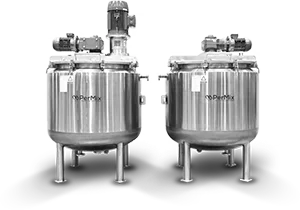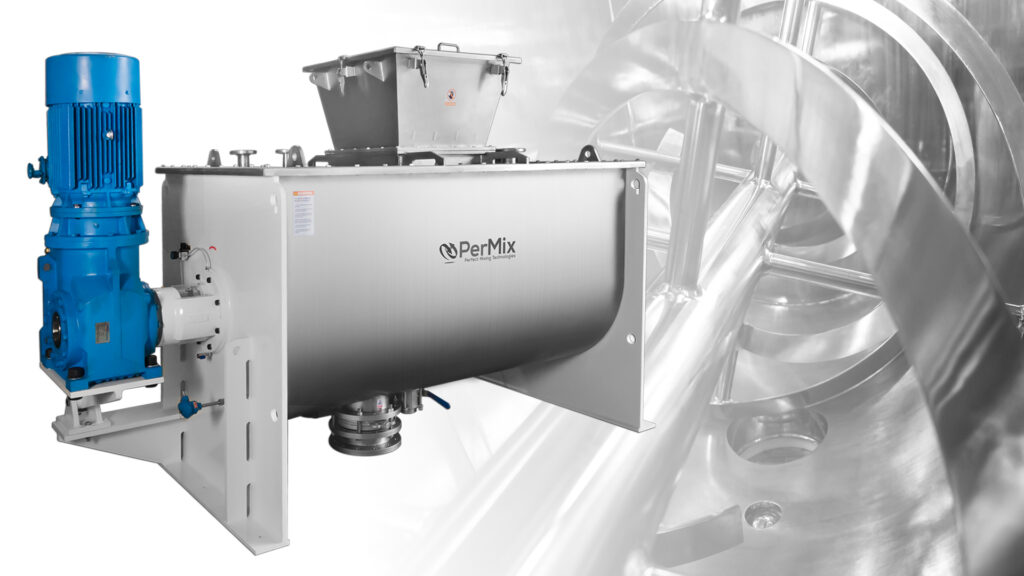Industrial Mixers
PerMix News & Updates



Ribbon mixers are one of the most popular types of mixers used in the food industry for blending, homogenizing, and mixing various powders, liquids, and viscous materials. This type of mixer is capable of creating a homogeneous mixture of ingredients in a reasonable amount of time, although more efficient options are available, ribbon mixers are more common because of age in the industry.
However, while ribbon mixers are effective, they also come with some potential disadvantages, particularly in regards to heat transfer. In this blog, we will explore the disadvantages of heat transfer in ribbon mixers, and offer some ideas on how to mitigate these issues.
One of the main disadvantages of heat transfer in ribbon mixers is the potential for heat loss and decreased surface area of heating. The rotating blades of a ribbon mixer are not as efficient as other mixers, and the open top and U-trough design allow for heat loss, as well as minimizes the surface area compared to other mixers, that are able to provide a full jacket, closed top design.
Also, due to the nature of the mixing process, some of this heat can be lost to the surrounding environment. This can lead to a decrease in the temperature of the material being mixed, which can affect the quality of the finished product.
Another disadvantage of heat transfer in ribbon mixers is that it can lead to inconsistent temperatures in the material being mixed. The rotating blades create a swirling motion, which can cause the material to be heated unevenly. This can lead to a variety of issues, such as clumping, poor texture, and poor flavor.
The heat generated by the rotating blades of a ribbon mixer can also affect the efficiency of the mixing process. The heat generated can cause the material to become more viscous, which can lead to poor mixing performance. This can result in an inconsistent mix, leading to an inferior product.
Finally, the heat generated by ribbon mixers can also create a safety issue. The heat generated can cause the material to become volatile and potentially combustible. This can create a hazardous environment, and can lead to safety issues such as fires or explosions.
Fortunately, there are a few ways to mitigate the disadvantages of heat transfer in ribbon mixers.
One way to reduce the amount of heat loss and increase efficiency by a ribbon mixer is to use an insulated mixer. Insulated mixers are designed to reduce heat loss to the surrounding environment, which can help to maintain consistent temperatures in the material being mixed.
Another way to increase heat transfer in ribbon mixers is to use low-speed mixers. Low-speed mixers allow better heat transfer than high-speed mixers, which can help to reduce the risk of heat loss and improve the efficiency of the mixing process. The slow agitation allows for product to come in contact with the heating surface area longer. This however does slow the mixing process.
Finally, some ribbon mixers are equipped with cooling systems, which can help to reduce the heat generated by the mixer. Cooling systems can help to reduce the risk of fire or explosion, and can also help to ensure consistent temperatures in the material being mixed.
In conclusion, while ribbon mixers are highly effective, they can also come with some potential disadvantages, particularly in regards to heat transfer. Fortunately, there are a few ways to mitigate these issues, such as using insulated mixers, low-speed mixers, and cooling systems.
By taking the necessary steps to reduce heat transfer in ribbon mixers, businesses can ensure that their mixers are safe and efficient, and that the quality of their finished products are not compromised.
